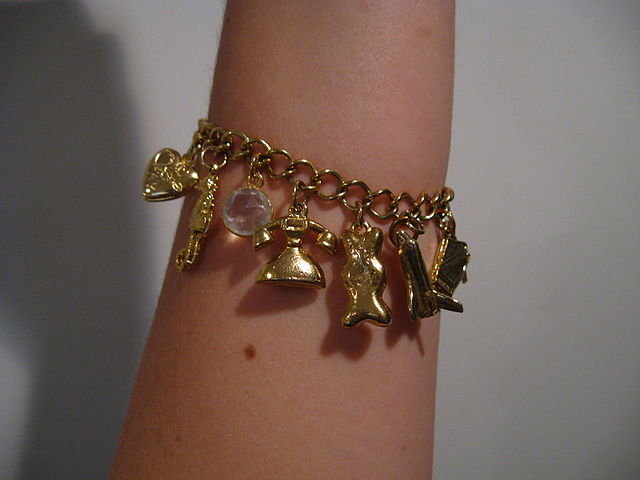
Nobody thinks about wearing a story on their wrist when they wear a charm bracelet. But, this little piece of jewelry has a rich history. The next time you eye one in the store, or you’re thinking about what to wear for a night out on the town, consider this:
From 4500 to 2300 BC
Charm bracelets date back to Neolithic times, when men selected an unusual piece of bone shell, stone, or wood, and transformed it into something they could wear. Usually, this meant placing it on a leather thong.
From 2300 to 700 BC
During this time, charm bracelets were known as amulets or talismans. They were associated with magic, mystique, and spirituality. Early charms during this period were made from lapis lazuli, rock crystal, and semi-precious stones or gems. The Babylonians are believed to be the first people to wear charms on their wrists from around 700BC.
In Ancient Egypt
Ancient Egypt is inherently mysterious. We often associate the Egyptians with intelligence and ingenuity. During this time, Pharaohs and the wealthy adorned charms. The first recognizable jewelry appeared in 3000 BC, and were worn on the head and neck. Classic symbols and charms like the Ankh represented the force of life. The Eye of Horus was said to protect its wearer in life and death, especially the afterlife.
From 750 BC to 475 AD
During the Roman Empire, an amulet or charm bracelet was used to signify one’s own life. For example, early Christians wore the “ichthys” (a symbol of the fish) to signify that they were followers of Jesus Christ.
The fish symbolized the feeding of the five thousand by Jesus on the Jordan River.
From 1066 to 1485
During this time, English Kings, Queens and knights often wore amulets and charms as protection. The period is known for its belief in witchcraft and wizardry. A lot of people during this time were concerned about magic and mayhem that could befall them by their enemies. People of this time hoped that charms, prayer, and incantation would save them and protect them.
From 1300 to 1600
During the Renaissance, lucky charms and amulets weren’t as popular. This was the dawn of the age of reason and the Enlightenment. Books, science, and math were replacing mysticism and superstition.
Charms were remnants of an uncivilized past. But, gemstones and charms still retained importance among the wealthy, since it signified their family name and lineage. To the masses, however, they did remain somewhat popular as there was very little in the way of education and superstition was still a part of many people’s lives.
Industrial Revolution – 1750 to 1900
During the industrial revolution, only wealthy individuals could afford custom jewelry and charms that were made during this time. However, it wasn’t long before technology advanced to the point where precious metals could be mined efficiently, allowing the middle class to own and wear charms which, only a decade ago, would have been unaffordable.
The shift actually began in Britain, spread to most European countries, and eventually to America.
1945 to 1950
By the end of World War II, soldiers were ready to come home. But, they didn’t want to come home empty-handed. So, they purchased handmade jewelry as souvenirs for their loved ones and family. Local craftsmen would carve wooden or metal souvenirs as gifts. Often, these gifts were replicas of common items in the local area.
Soldiers would also have “dog tags” made for them and, over time, this gave way to small celluloid or acrylic charms packaged in cereal packets, gumball machines, and packets of sweets.
Today
Today, we enjoy all sorts of charms and bracelets. You can buy sterling silver charms and charm jewelry from commercial operations like Bedbathandbeyond.com and your local jeweler.
From vintage pieces to modern and contemporary, charms and bracelets have been a part of not just American history but of world history. Today, you can wear a story on your wrist – something that, at one time, wasn’t possible.
What’s your story?
Molly Powell is a stay-at-home Mom who discovered blogging several years ago. She writes on a range of topics usually revolving around family life and the home in some way.